Most good business decisions have an associated return on investment (ROI). If you purchase a piece of equipment that increases output by 50% with the same labor, then the ROI calculation seems simple. An investment in marketing that drives a 20% increase in new customers is similarly easy.
But what about initiatives tied to personality assessments? How do we transition from framing personality assessment as part of the “soft” and “fuzzy” world of HR and OD into the concrete, bottom-line world of finance and real ROI?
If your organization is contemplating making an investment in the use of personality assessments, then this should help you determine if your initiative will drive enough ROI to justify the resources and investment.
Measurement
To calculate the ROI we need to know three things: 1) the cost of not having insights related to personality assessments, 2) the investment in the personality assessment initiative, and 3) the business and financial results associated with success from that investment. “Better communication” is not an adequate outcome to build a credible ROI calculation.
As we noted earlier, personality assessments are not like capital improvements or marketing initiatives. However, given the importance of aligning employees’ personalities with their roles, team, and culture, we can identify personality assessments as the first link in a measurable causal chain. Such linked measures include hiring, engagement, turnover/ retention, customer satisfaction, and shrinkage (theft). These measures can in turn be linked to concrete outcomes and with a clear financial impact.
To see how we can shift from the intangible to a tangible ROI, let’s consider our first two examples: hiring and engagement.
Moving from Intangible to Tangible Impact – Hiring
To estimate the cost of a current hiring problem, it’s helpful to start with the chain of events if we don’t solve the underlying issues.
As one example, consider the impact of hiring delays if you don’t have the tools to identify the right candidate efficiently and effectively. Without the insights you gain from personality assessments, you might need additional interviews or more time in the evaluation. One immediate consequence is that such delays will undoubtedly lengthen your recruiting process. This increases the costs of both recruiting and lost productivity from the unfilled role.
Another cost from this chain is the signal of indecision and inefficiency that delays send to the best candidates, increasing the likelihood that you’ll ultimately need to settle for “good enough” by the time you finally make an offer. And these hiring issues don’t occur in a bubble either, with a particularly negative impact on current/ future team members who need to make up for the work not getting done by the missing colleague in the meantime.
Thinking through such a chain of events tied to hiring and turnover clarifies both the direct and indirect costs of hiring problems and can help you build a consensus around what hiring failures cost in real dollar terms. Estimates vary by organization and role but even conservative gauges indicate a cost of 50% of annual compensation and many companies peg the cost as high as 100% or 200%.
Calculating the Cost of Poor Employee Engagement
Another opportunity to explore the costly chain of events is employee engagement. Decades of research from Gallup indicates that engagement is correlated with a wide range of measurable outcomes including productivity, profitability, patient safety, and absenteeism. Engagement is also perhaps the single most powerful leading indicator of employee turnover.
Definitions of engagement vary but in basic terms, engagement is about sustained focus, volitional effort, and a sense of purpose and connection at work. The right personality assessment can improve engagement by helping align a person’s individual personality profile with the requirements of the role. When personalities align with core role requirements, employees are more likely to feel energized rather than drained as they take on daily tasks.
To support engagement through personality insight you must first identify the traits essential for role success. For example, does the role require high levels of sociability or extended periods of independent work? Do you need someone with high levels of creativity and ideation or someone who enjoys a strong focus on practical tasks and efficiently executing established methods?
Once you have identified the critical traits, you can then compare the ideal candidate profile to your candidate personality assessment results. The comparisons will help you determine which candidates are likely to fit the role well and which are likely to face more challenges. In addition to providing valuable candidate insights, such careful consideration also demonstrates that you care about the individualized fit between the candidate and the organization down to the specific role and team. It also enhances team-level engagement because highly engaged top performers want to be surrounded by other highly engaged top performers.
Putting these two together draws a clear line from improved engagement to reduced costs, folding in both reduced turnover and increased productivity as well as the cascading impact on team performance. The difference between fully engaged and poorly engaged is like the difference between your best and your worst employees multiplied by the number of people at your company.
Define Success
Now that we know what it might be costing us to not solve the problem, we need to define what success looks like. And when we say success, we need to know what we’ll measure. Being clear on our target measures of change will make it easier to assess the financial impact (dollars of benefit) and make a more compelling business case.
If we believe that engagement and hiring outcomes will improve after we introduce personality assessments into our people processes, we should also expect to see meaningful changes in our engagement and hiring metrics over time.
For example, engagement can be measured with a survey that includes items such as “My organization supports my professional development [1-10]?” To measure any changes in engagement that might be related to our personality assessment initiatives, we conduct our engagement survey just before our initiative starts and again at regular intervals (e.g. six months) after implementing our personality assessment processes. If our implementation of the personality assessment processes are successful, we should expect to see a corresponding increase in engagement over time. It’s not enough to say that people seem more engaged. You want to prospectively define what you’ll measure to know that you are successful.
The same holds true for hiring, where we can evaluate changes in time to fill, recruitment cycle time, 30-day/90-day retention measures, proportion of top picks hired, and, ultimately, reductions in recruiting costs.
Keep in mind that ROI needs to be an area where the numbers don’t seem fictitious. Be sure that the calculations for your ROI fit your organization. Take the time to speak with your finance people and reach an agreement about what those things might cost your organization. The last thing you want is for your own colleagues to poke holes in your business case. Start by speaking with people in your finance team or affected lines of business. Build consensus about measurements early in the process.
Now that you’ve figured out how to measure for impact, how do you ensure that your personality profile initiative delivers the results that you expect?
Set for Success
Too often, results don’t align with expectations. When this happens, your next project might receive excessive scrutiny. Here are steps to ensure that your personality assessment initiative drives measurable results that will meet or exceed expectations.
Clear Objectives
Personality assessments can help in many different areas. High performers start with one area and then expand based on success. If you can’t measure success in one area, then trying to address fifteen areas might not be the answer.
Identify the current measurable challenges, and then define the plan that will get you to new, measurable outcomes.
Build the Right Team
Enlist the help of in-house or outside experts, at least in the first phase. They will have the experience and expertise to create a best-fit assessment strategy and define the plans of action to generate results.
Select the Right Tool
Though we would love for every organization to fall in love with our tool at Paradigm Personality, we know vendors in the industry deliver solutions at three different levels. Be sure that the platform and partner you select can deliver to meet or exceed expectations.
Identify Your First Group
Each organization has a group of early adopters. Find that group in your organization who is feeling the pain of their existing challenges and is optimistic about seeing real results. Don’t try to boil the ocean. As much as you might want to start big, we find that starting with a relatively small group gives you insight into adjustments you might make before a broader rollout. Once you demonstrate great results, getting broader buy-in will be relatively easy.
Conclusion
If you take the time to measure the impact of what isn’t working compared to the anticipated results of an effective solution, then you’ll have a solid business case and a tangible ROI. Perhaps more importantly, you’ll have put in place processes that benefit employees by improving fit, stabilizing teams, and increasing the probability of success for individuals and the organization alike.

